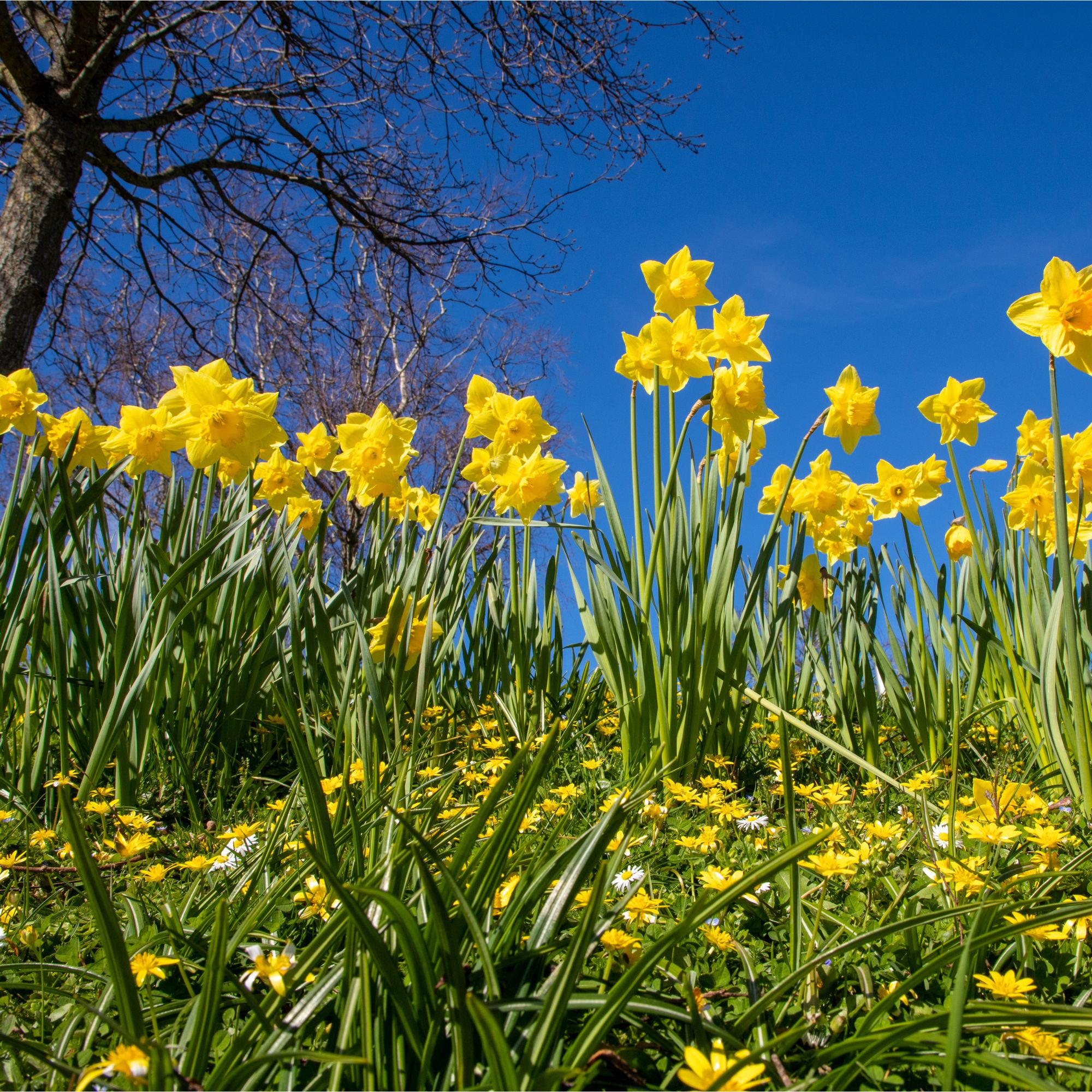How often should you water plants in February? How to avoid overwatering (or underwatering) your garden
There is a right way and a wrong way to water your garden, and our experts are here to help you avoid the latter...


It's raining, it's pouring, and yet... sometimes, just sometimes, the sun shines so brightly it feels like summer is already upon us. So, how often should you water plants in February to counter all of these wild weather shifts?
It's one of those watering mistakes you don't realise you're making until you've done it – usually because we tend to focus more on watering our garden in hot weather than we do in winter and spring.
So, where should watering sit on our list of jobs to do in the garden in February? Don't worry, because our experts are here to help!
How often should you water plants in February?
It's a truth universally acknowledged by all gardeners that your watering schedule should absolutely shift and change with the seasons – and that means all of the seasons, not just the summer.

'February tends to be quite wet and miserable as a rule – and most of your garden plants will be in their dormant period,' says Christopher O'Donoghue, one of the co-directors at Gardens Revived.

A gardener with over a decade of experience under his belt, Christopher set up Gardens Revived with his brother, Andrew, in 2018 to create a thriving family business. Together, they have worked on residential gardens, listed buildings and gardens, flower shows and large estates with some exceeding 70 acres – many with historical significance.
'As such, your plants won't need as much watering during February as they do in the spring and summer,' continues Christopher.
Sean Lade, director of Easy Garden Irrigation, agrees, noting that anyone lucky enough to have a nice, sunny and dry winter should make sure to water plants once a month (if soil is dry to touch), and focus their watering efforts 'on the base of the plants rather than the foliage'.
Sign up to our newsletter for style inspiration, real homes, project and garden advice and shopping know-how
'Too much water on the top of the plant may lead to fungal diseases or mildew that could be lethal to your plants,' he explains.

Sean holds in-depth expertise in gardening and horticulture, with a focus on designing efficient irrigation systems. His solutions grace gardens and nurseries across the UK, embodying an environmentally-conscious approach to water usage. Sean is always happy to share knowledge, guiding gardeners and growers through regular training on irrigation best practices.
'Remove any dead leaves and flowers to keep them all healthy,' continues Sean, 'and you’ll have no problem creating a stunning floral display all season.'
Now, while it is true that watering your plants just before a freeze can help keep your plants warm, Sean cautions that too much water (or too little water) could be damaging.
'Too much water may freeze leaves or damage roots,' he says. 'However, if you water the correct amount, you may protect your plants from frost by increasing your plant’s soil’s ability to retain heat from the sun, insulating the roots and retaining warmth for a longer amount of time.'

Now that you know how often you should water plants in February – little and deeply, to avoid the dangers of overwatering – it's a good idea to reap the benefits of all of that extra rainfall by focusing your attention on rain harvesting.
It's also a good time to improve lawn drainage, too, to avoid any rain damage to your garden. Because, 'when it comes to watering your garden in the winter months, your grass will need much less water than it needs in the summer,' says Sean.
'Colder temperatures call for only about half an inch of water as compared to the one to two inches required in the summer heat,' he notes, adding that, if you do find yourself watering your grass in the colder months like February, it's vital you 'make sure to water during the morning'.
'This ensures all the moisture will have time to soak into the soil before the temperature drops at night,' he explains. 'Additionally, any water on the blades of grass will have time to evaporate before they freeze in colder temperatures.'
FAQs
How often should I water my winter garden in February?
Generally, your garden shouldn't need watering at all in winter, due to heavy rainfall and plants being dormant over this time. If soil is very dry to touch, however, you may want to consider watering once or twice a month.
There are, too, a few exceptions to this rule. Sean says that winter pansies, for example, will 'require regular watering (at least once a week) during their blooming period'.
'This is especially important during dry spells or if there has been little rainfall,' he says, noting that the same will be true of primroses, as these pretty little flowers thrive in moist soil.
How much water do you need for a winter garden in February?
Generally speaking, plants use less water in the cooler winter months, which means it's unlikely they will need much additional watering on top of all that heavy rainfall.
You may find that potted evergreens will need some additional water (maybe once a month), however, as winter winds can prove very drying – just be sure to do this before midday, so the roots have time to suck up any moisture before the sun sets.
And just like that, you know how often you should water plants in February: very little and sparingly, and only if the soil is dry to touch, it's early enough in the day to give your plants enough time to drink up, and the temperature isn't below 4°C.
As a rule, let the rain do all the hard work for you – and try to collect and store as much rainwater as possible, ready for the hotter, drier months ahead. Your garden will thank you for your efforts later, we promise!

Kayleigh Dray became Ideal Home’s Acting Content Editor in the spring of 2023, and is very excited to get to work. She joins the team after a decade-long career working as a journalist and editor across a number of leading lifestyle brands, both in-house and as a freelancer.